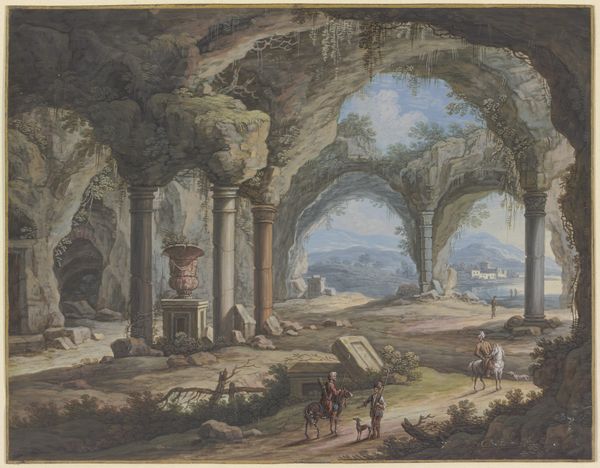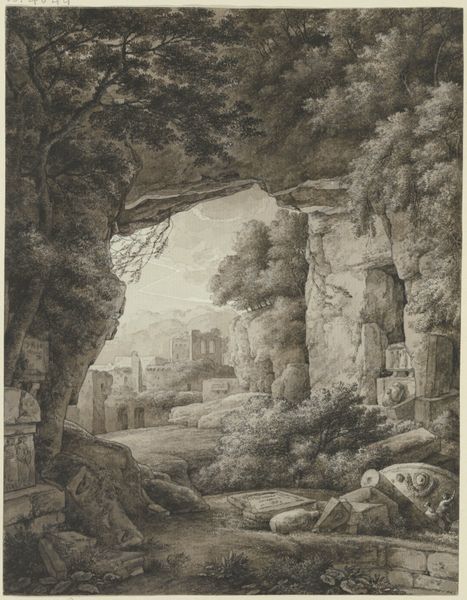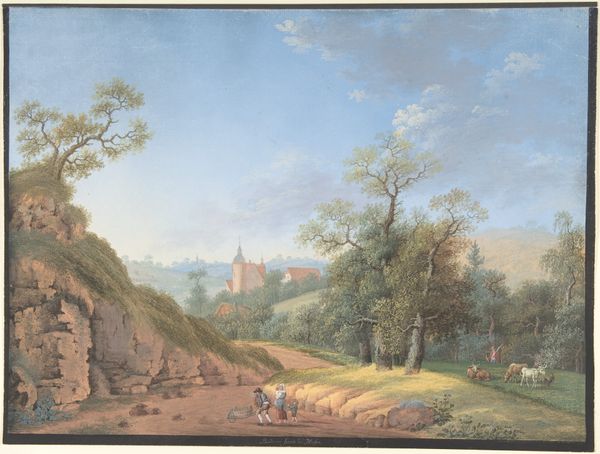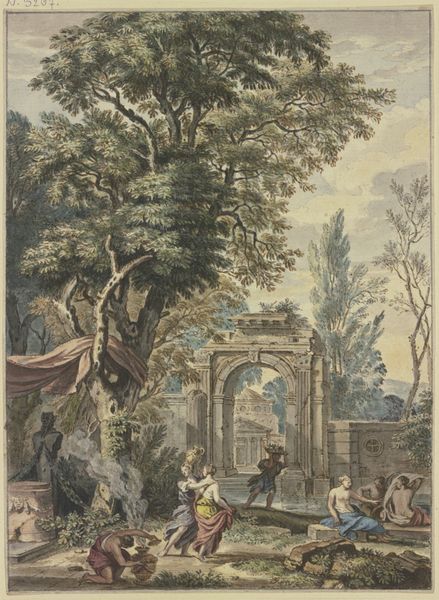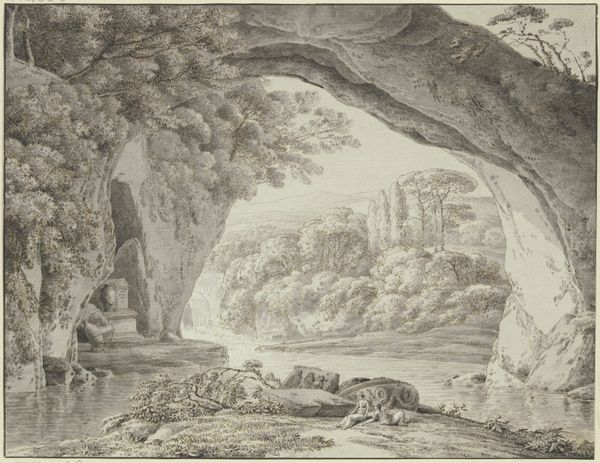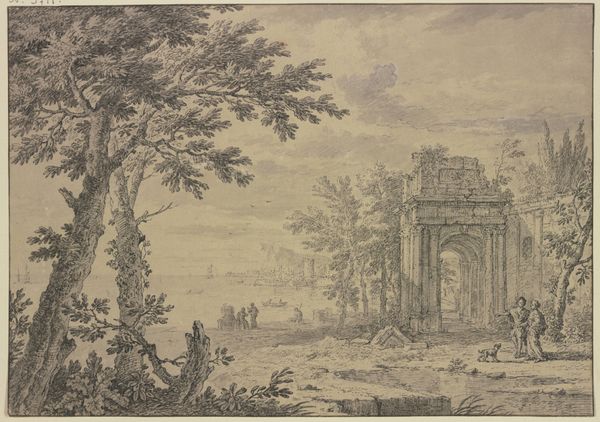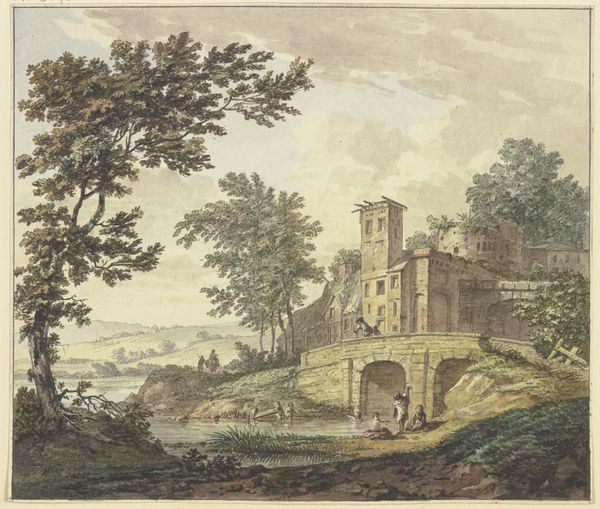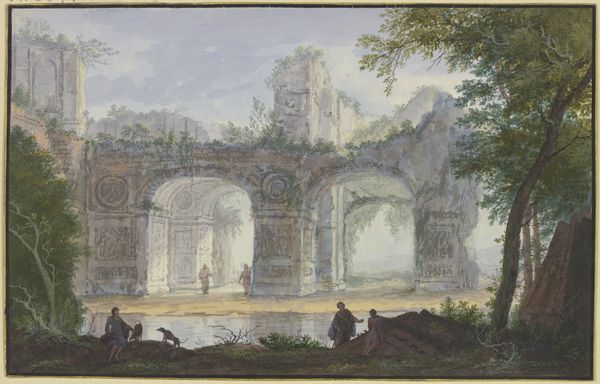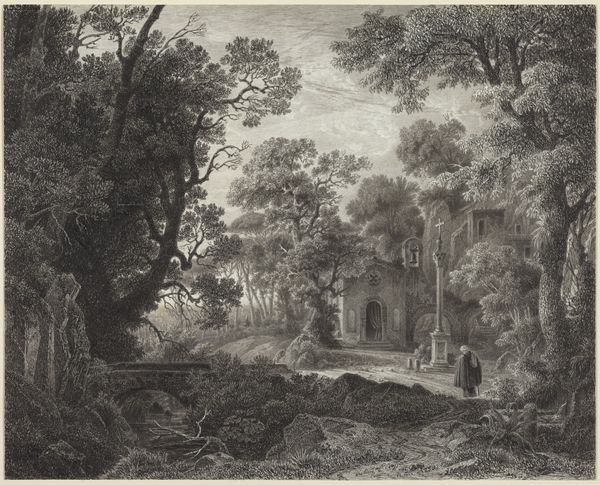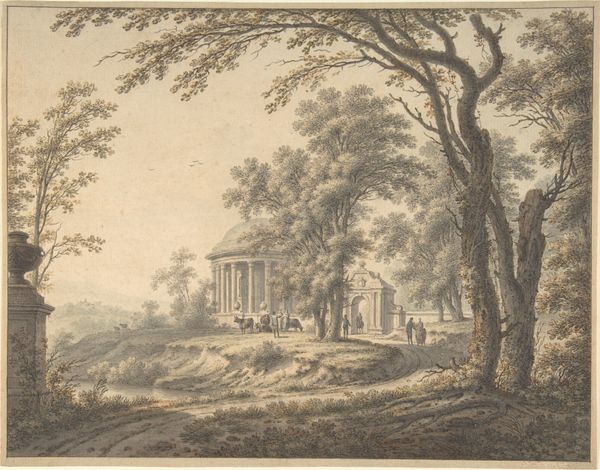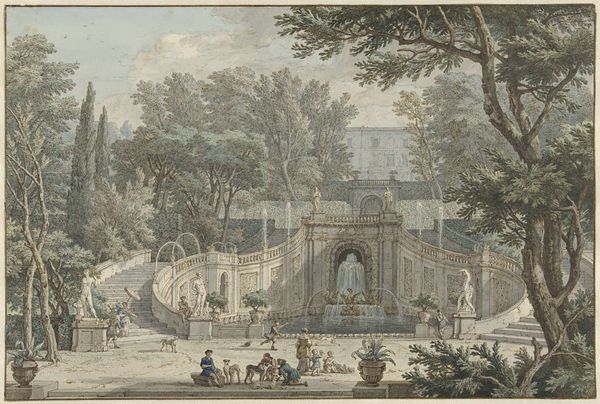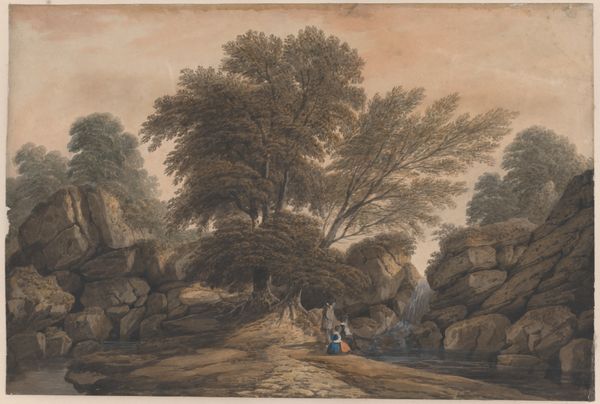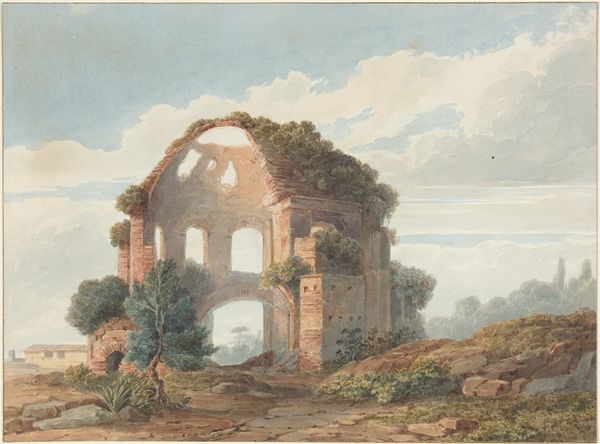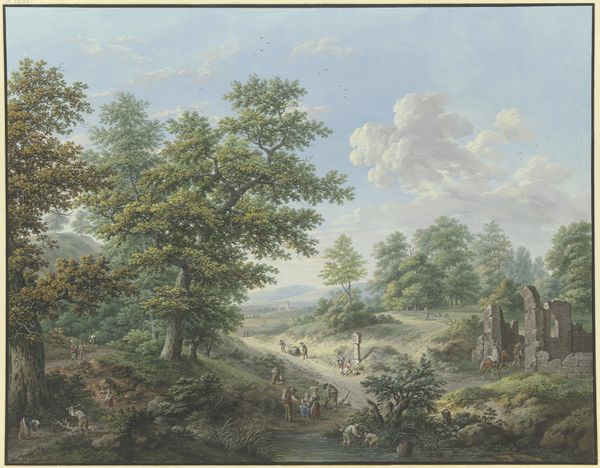
Inneres einer säulengestützten Grotte, darin in einer Nische eine große Vase
0:00
0:00
drawing, coloured-pencil, paper, watercolor
#
drawing
#
coloured-pencil
#
water colours
#
baroque
#
landscape
#
paper
#
oil painting
#
watercolor
#
coloured pencil
#
watercolor
Copyright: Public Domain
Curator: Here we have "Inneres einer säulengestützten Grotte, darin in einer Nische eine große Vase", an evocative drawing held here at the Städel Museum. The piece is rendered with coloured pencil and watercolor by Carl Sebastian von Bemmel. What are your first thoughts? Editor: Haunting! It's like a theatre set abandoned after a performance of Arabian Nights. This feeling of melancholic grandeur permeates everything; you can almost smell the damp stone and the faint perfume of a long-dead sultan. Curator: That is a beautiful reading! Grottos, historically, were more than just caves. They were deliberately constructed spaces, designed to evoke classical antiquity and a sense of the sublime. This particular grotto seems to embody that spirit, doesn't it? The vase within the niche serves as a symbolic marker of that classical aspiration. Editor: Absolutely. Vases always represent something held, some potential – love, death, memories, everything trapped, as if this scene were sealed in the belly of that vase for eons. The light outside those cave-like archways offers the only escape... a reminder of freedom, tantalizingly out of reach. And what about the riders? Do they give the place life, or underscore its loneliness? Curator: I think they function on both levels. In Baroque landscape traditions, human figures often serve as scale references but also evoke narrative possibilities and movement. They exist in relation to the scale and grandeur of their surroundings, adding a poignant, perhaps futile, counterpoint to the scene's permanence. Note how their attire differs from classical dress – perhaps subtly indicating colonial power. Editor: Right, there's almost a stage direction lurking behind their poses, as if they're perpetually moving into the story's beginning, or walking out to meet the future! Do you think there is a cultural memory present within this grotto, one carried by those columns and suggested by the vegetation reclaiming what was intentionally arranged? Curator: Yes, decidedly so. Grottoes carry potent symbolism across centuries and cultures: the sacred space, the womb, the echo chamber. It represents the cyclical process of returning to origins. And in its architectural embellishments – the columns, the formal placement of the vase – one senses an effort to overlay and perhaps master nature with human intention, yet time is clearly doing its work on the man-made structures here. Editor: So interesting, how a work like this pulls at past, present, and potential futures, just from coloured pencils and watercolours! Curator: Precisely! These images condense such intricate narratives, it gives us plenty to ponder!
Comments
No comments
Be the first to comment and join the conversation on the ultimate creative platform.
